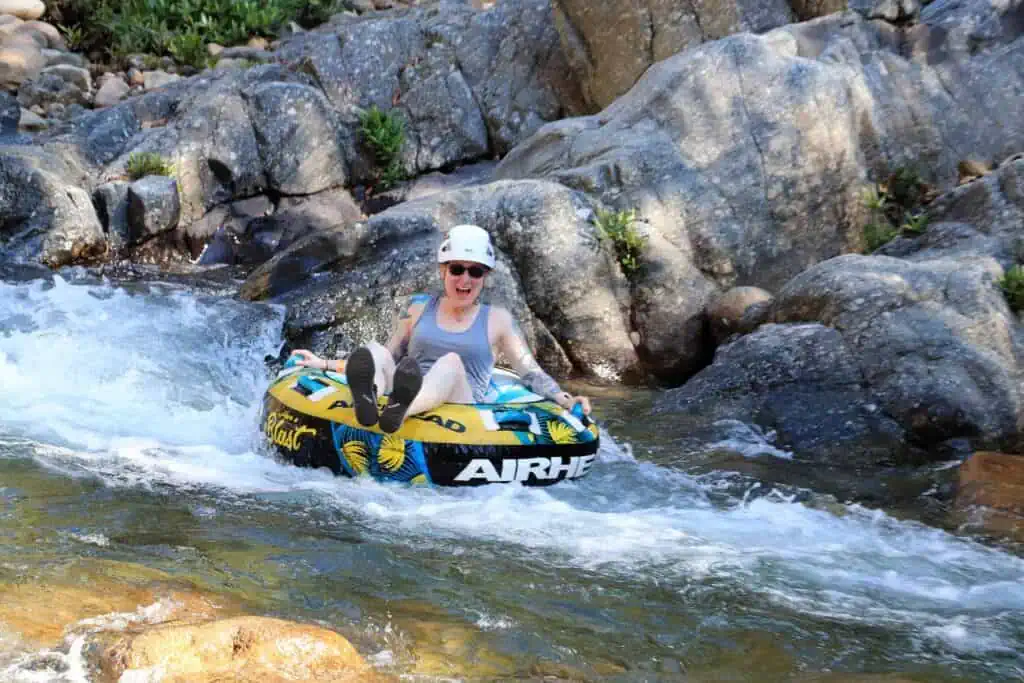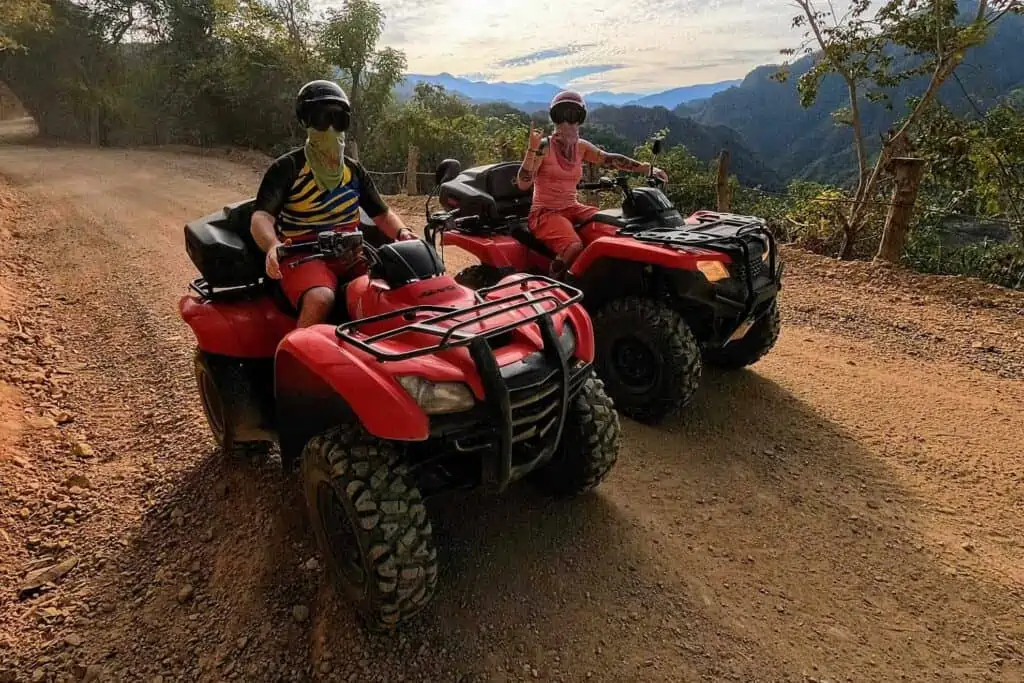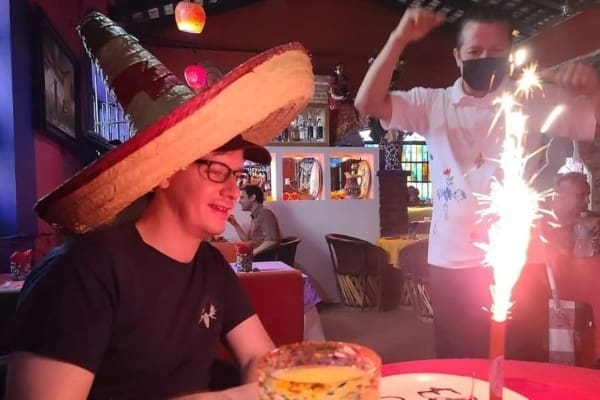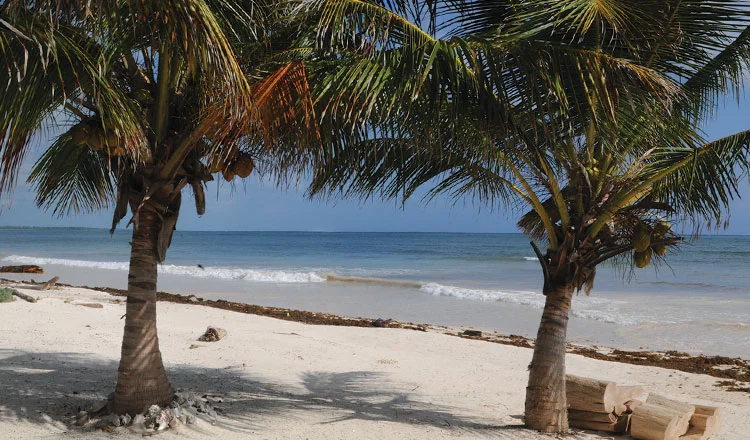The highest peaks of the Animas mountains in the east are already colouring light pink. As the road dips slightly through an arroyo, there are broad rolling hills to the west.
We haven’t made many miles today, but it’s time to set up camp.
Carefully I drive off the highway, navigating to avoid cacti and the other scarce growth, and park close to the road.
First we explore our new camp, walking towards a rise barely high enough to be called a hill. Rocky ground covered in soft, reddish dust.
I pick up a white bubbly rock embedded with crystals. I am not a geologist, not even an amateur, but I have an interest in anything shiny, colourful or just odd.
As we marvel over the unusual rock, we start finding more, so many beauties. And upthrusts of flat slabs half an inch thick, about a foot in diameter. The reference books call it slate.
For the white rock, I will ask at the Yukon geology department.
It is amazing, when one actually looks, how many treasures there are to be seen.
Back to camp to cook supper in the last rays. In the morning I follow the arroyo – the flat, dry creek bed – which only fills occasionally when it rains. I like to follow these paths made especially for me.
I am off to collect some of the slate, which I think will come in handy to make tortillas.
I scramble up to where the sand makes way for washed clean rocks. Suddenly the walls are high; the Arizona Oak grows big in here.
As if in a dream, I step into a cathedral-like; the floors polished sandstone, the walls 30 feet high. The roof is manzanita and oak leaves.
It’s just me and the birds as I sit dazed on a gnarled old root. The black stain on the walls shows where the water flows in, but it has not rained for a long time.
The floor is littered with orange manzanita fruit, little hollow apples, the odd acorn. Everything is dusted with tiny crystals.
A butterfly visits me. This is a place for the soul.
I climb into a crevice that leads higher and find myself in another level of the gallery – where the organ might be. Yet another level higher, I sing a song for the souls across the valley.
Later, a little down the road, we find a cave, although not as magical a place. Eery as caves are, there’s a large snake skin in it – a diamondback. I keep the rattle.
Back home in Whitehorse, the geologist generously helps me out. The bubbly rock appears to be an epithermal quartz.
—
Travelling from New Mexico to Arizona, we camp free on Bureau of Land Management lands, in parks, or the occasional parking lot.
In Bisbee we camp on a flat parking lot in the middle of town. A mountainous old coppermine town with wonderful people. Here we fill our hearts with arts and music.
We walk up one of the steep streets away from the town centre, the houses becoming more interesting in a derelict way, but always artistically done, till we are right in the mountains
As in the Yukon, the wilderness never far away.
Driving on again, we choose the backroads, roughly following the map, but mainly going with the flow.
Along the border of Mexico, occasionally we are put into the spotlight by the border patrol. We find, as they tell us, that there is really no danger in travelling here, contrary to what we might assume from reading or listening to the news.
At one point north of Nogalos, we surely are lost, not knowing south from north. A hand-painted sign announces, “This is not a public road.”
We make yet another turn somewhere and suddenly there is Ruby Road, a road we had seen on the map, and we want to take. We camp along it for several days, hiking through the desert and climbing its protruding rocks.
We wonder when this lucious wilderness camping will end, as we come closer to Tuscon and then Phoenix.
Making it to Tucson becomes rather confusing. I take a wrong turn in Arrivaca (a lovely small town where the central park is a decaying pueblo decorated by its occupants, the caring town drunks.)
Michael knows I am going the wrong way, but I am convinced. Thirty miles later I discover my error; the sun is on the wrong side of the road!
From here I am happy to follow Michael’s directions – coming close to cities with a combined population of 2,000,000 million people, it will be hard to find camping in the wilderness.
Michael says, flinging it, just go past Tuscon on the highway, turn off at a certain intersection. He gives me the number, which I forget now. Drive onto that road for a few miles and we’ll see.
By magic, two miles down, there is a little dirt track into the flat desert. Dusty sand, sparse bushes and huge cacti.
We stop beside a saguaro, where a small arroyo blocks our way.
The views are endless, we can barely hear the highway, and the Arizona heat is delicious.
In the distant mountains, Picacho Peak is the most outstanding.
We are sunbathing; it’s December and at least 25 degrees Celsius. Hard to believe we are so close to major cities; there’s no one around for miles.
Except in the sky, where helicopters fly closer and closer as the afternoon comes to end – obviously checking out what I am not wearing.




